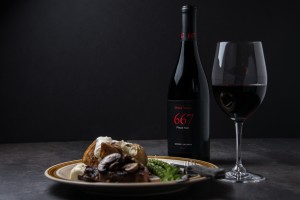 The rules are plain and simple. White wine pairs with fish, red wine pairs with meat. And if you stand by this principle you’ll have very boring meals. Throw the rules out, this is wine. Drink the wines you like, paired with the foods you like to eat. You’ll never go wrong. But,be careful, you don’t want to overpower the food with the wine, or vice versa. Here’s some simple food…for thought.
The rules are plain and simple. White wine pairs with fish, red wine pairs with meat. And if you stand by this principle you’ll have very boring meals. Throw the rules out, this is wine. Drink the wines you like, paired with the foods you like to eat. You’ll never go wrong. But,be careful, you don’t want to overpower the food with the wine, or vice versa. Here’s some simple food…for thought.
What’s the base ingredient?
You may be purchasing chicken, beef, or fish. You may not have determined your secondary preparation components; spices, sauces or cooking methods. Take into consideration the intensity of the base ingredient, cod and tilapia, for example, are light, beef is rich and bold.
Wine is light, medium or full bodied depending on the grape variety or growing region. Pinot Grigio is a very light bodied wine, Sauvignon Blanc is medium bodied and Chardonnay is full bodied. For red wines Pinot Noir is light, Merlot is medium bodied and Cabernet Sauvignon is full bodied.
The difference between a sweet wine and a dry wine is the residual sugar content left in the wine. The amount of alcohol in a wine is an indicator of the wine’s sugar content. High alcohol wines are dry, low alcohol wines are sweet, every other wine is in between. Sweeter wines tend to pair better with spicy foods. Chocolate pairs well with ports. Matching the sweeter wines with sweet foods is challenging, try to balance the sweetness whenever possible.
The Wine Reviews on wardonwine.com will give you some very helpful guidelines for wine and food pairing.